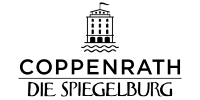 |
|
Why do we have days and nights? How do you make maps and how do you read them?
What does everyday life in other countries look like? Felix’s Large Atlas of
the World by Annette Langen and Constanza Droop published by
Coppenrath Verlag, Münster, provides answers to questions like
these. “A perfect introduction to the fascinating world of geography!”,
says Prof. Dr. Dr. h.c. Manfred Domrös, Director Institute of Geography
at the University of Mainz. The atlas explains scientific facts on the origins
of Earth, the space, seasons and climate or time zones with professional that
have been revised and complemented with many details and extras in cooperation
with globe manufacturer Columbus. Each page features search tasks,
hands-on ideas and astonishing information about animals, records and unsolved
mysteries for little globetrotters.
The clou: Real letters by Samira from Afghanistan, Luz from Peru and eight
other children from different countries describe everyday life in their
homelands. What is more, an Antarctic scientist tells about life in a research
centre at minus 40 degree Celsius. The book also tackles hot topics like
climate change, environment protection and population development and gives
children food for thought. "The world in a village” is the headline of the
chapter that graphically explains world population: "If you could shrink the
Earth with its population of 6 billion people to the size of a village with 100
inhabitants, 57 people would have been Asians, 21 Europeans, 13 Americans, only
eight from Africa and just one Australian – according to statistics.”
Not only the highly detailed maps are remarkable – also the layout is very
special. A large unfoldable page shows different panoramas and describes the
origins of rivers, mountains and different animal and plant species. An extra
booklet supplies inquisitive minds with more information about Germany, Austria
and Switzerland. A real compass and a giant world map poster with all national
flags top off the atlas and arouse the curiosity of future explorers.
|

